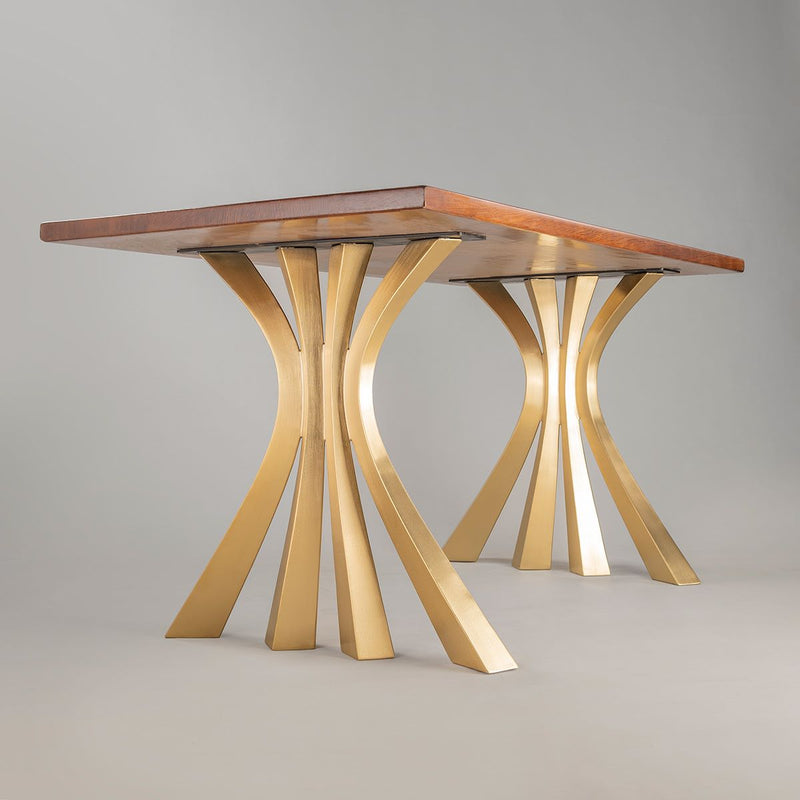Dining Room Table Legs: What to Think about Prior To You Get
Dining Room Table Legs: What to Think about Prior To You Get
Blog Article
The Ultimate Overview to Picking the Best Styles for Eating Table Legs
Picking the ideal designs for eating table legs is a nuanced procedure that requires stabilizing aesthetic charm with useful factors to consider. Custom alternatives use a possibility for individual expression, ensuring your table becomes a special focal point.
Modern Table Legs
In the world of contemporary furnishings design, modern table legs attract attention for their streamlined and innovative looks. Identified by tidy lines and minimal forms, these legs usually make use of materials such as stainless steel, chrome, and toughened up glass to produce an advanced visual allure. Not only do they boost the total elegance of the table, however they also contribute to its structural honesty and practical flexibility.
One of the key features of contemporary eating table legs is their flexibility to different table tops, from marble and glass to timber and engineered surfaces. Developers regularly trying out geometric shapes, including angular, tapered, and also sculptural forms, to add an unique touch per item. This method not just ensures a contemporary appearance however also permits greater customization to fit specific preferences and interior decoration.
Modern eating table legs also emphasize simplicity of upkeep and sturdiness. Therefore, modern-day dining table legs personify both form and function, making them a prominent selection in today's design landscape.
Rustic Farmhouse Styles
While modern dining table legs mesmerize with their streamlined, minimalist styles, rustic farmhouse styles provide a contrasting yet equally engaging technique to furniture visual appeals. Rooted in simplicity and functionality, rustic farmhouse table legs usually include durable, solid wood constructions that evoke a sense of warmth and custom. These layouts normally include redeemed or troubled timber, adding character and a vintage appeal to any type of eating room.
Among the most distinguishing functions of rustic farmhouse table legs is their significant, strong appearance. Often crafted from oak, yearn, or other sturdy woods, these legs can include a variety of shapes, from straight and square to elegantly turned or tapered designs (dining room table legs). The workmanship emphasizes toughness, with hand-finished information that highlight the all-natural grain and flaws of the wood, making each item distinctly gorgeous
Additionally, rustic farmhouse legs frequently employ classic joinery techniques, such as mortise and tenon joints, ensuring stability and durability. This design is especially appropriate for developing a relaxing, welcoming ambience, best for family celebrations and public dining experiences. By incorporating rustic farmhouse table legs, one can effortlessly blend performance with classic looks, accomplishing a timeless allure that improves the dining setting.
Classic and Classic Designs
Long-lasting elegance defines timeless and classic eating table leg layouts, perfectly blending custom with sophistication. These styles record the significance of sustaining appeal, usually including intricate craftsmanship that admires historic designs while preserving a modern allure (dining room table legs). The aesthetic equilibrium accomplished through such legs guarantees they remain relevant and fashionable throughout numerous interior settings, from standard to contemporary homes

Furthermore, the flexibility of traditional table legs enables them to complement various tabletop layouts, developing a natural and unified eating experience. Their classic nature guarantees that they hold up against altering fads, making them a beneficial financial investment for any type of eating room. Whether you look for downplayed elegance or magnificent appeal, timeless table legs provide a best mix of kind and feature, boosting the overall aesthetic of your eating location.
Custom and Special Alternatives
When it involves dining table leg styles, custom and special choices use a distinct way to see here now showcase personal preference and creative thinking. These selections allow house owners and developers to move past traditional layouts, creating a table that really reflects private design and the total style of the eating area. Custom-made legs can be crafted in a myriad of forms, dimensions, and patterns, from elaborate makings to modern-day geometric forms, allowing unlimited opportunities.
Distinct table legs can work as a centerpiece in an area, drawing interest and triggering conversation. Legs fashioned to look like tree branches can bring a touch of nature inside, while sculptural metal legs can convey a modern and commercial flair. One more preferred trend is integrating blended media, such as incorporating wood with steel or glass, to find out here now create a striking Discover More Here contrast and added aesthetic rate of interest.

Material and Complete Selections
Picking the best material and coating for eating table legs is important to achieving the preferred aesthetic and functionality. The option of products can dramatically affect the table's resilience, maintenance, and overall design. Common materials for dining table legs consist of timber, steel, and acrylic.
Wood stays a timeless choice, using warmth and adaptability. Maple, oak, and walnut are popular alternatives as a result of their robustness and rich structures. Steel legs, such as those made from stainless steel or iron, give a modern and industrial look. They are known for their strength and reduced maintenance. Acrylic legs, although much less typical, use a modern and airy feel, perfect for smaller rooms or minimal styles.
Wood legs can be stained to boost their natural grain or painted for a much more consistent appearance. Metal legs might be polished for a smooth coating or powder-coated for added protection versus wear and corrosion.
Ultimately, the selection of product and coating need to line up with the dining table's overall layout, use requirements, and the existing decoration of the dining space.
Final Thought
The selection of table legs dramatically influences the aesthetic and capability of a dining space. Modern designs use smooth, minimal allure, while rustic farmhouse styles give warmth and personality. Traditional and classic styles contribute sophistication via elaborate craftsmanship. Custom alternatives enable customized expression. The choice of products and coatings further enhances the general appearance and resilience. Cautious factor to consider of these aspects makes sure an unified and aesthetically enticing eating area.
Report this page